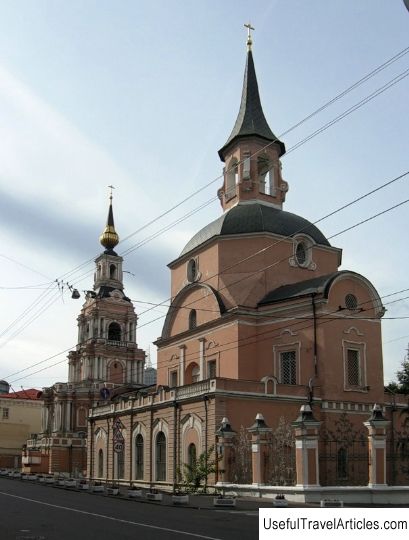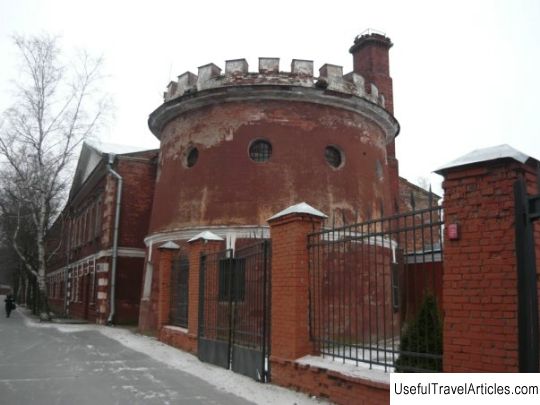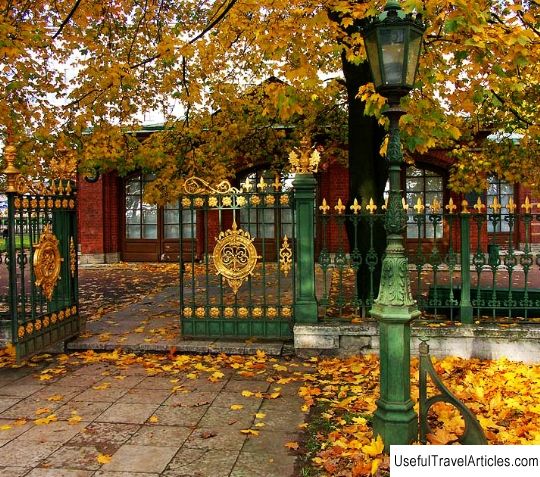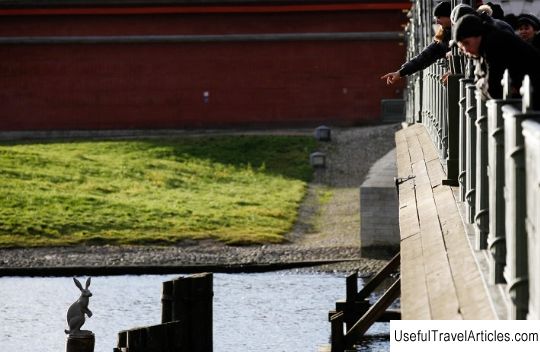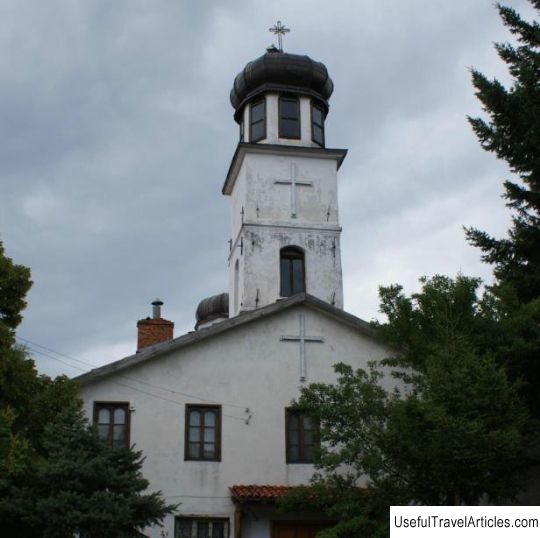Peter and Paul Fortress description and photos - Russia - St. Petersburg: St. Petersburg
Rating: 8,1/10 (1654 votes) 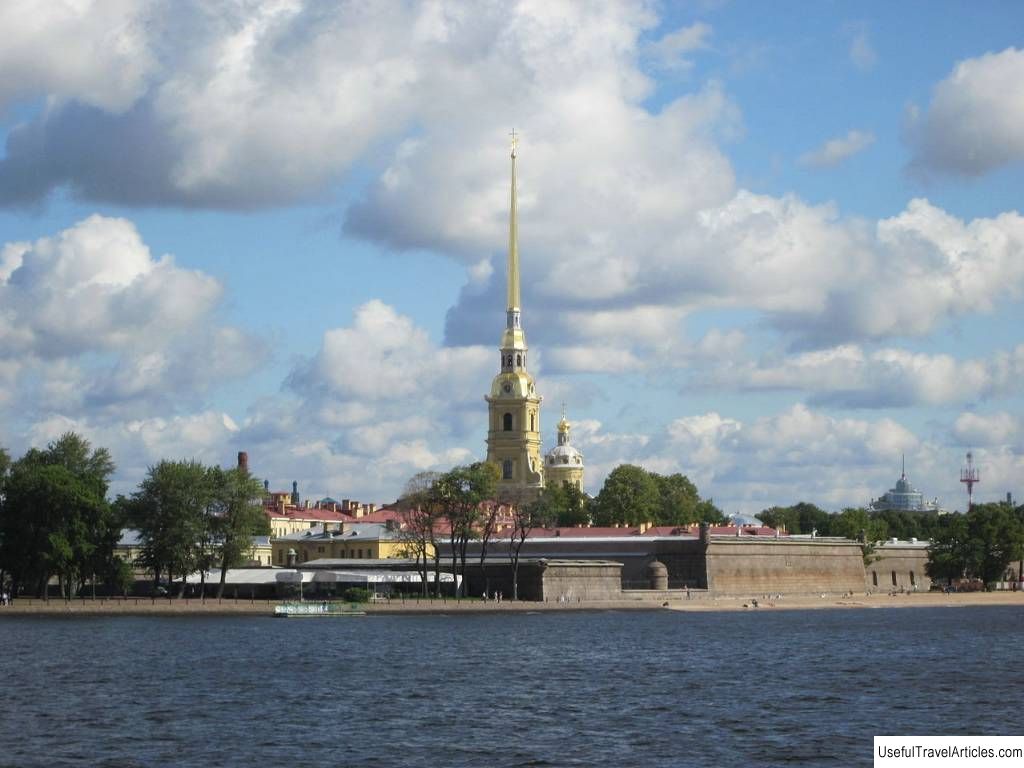
Peter and Paul Fortress description and photos - Russia - Saint Petersburg: Saint Petersburg. Detailed information about the attraction. Description, photos and a map showing the nearest significant objects. Photo and descriptionThe northern capital of Russia is rich in architectural sights, but only one of these tourist sites is the real historical core of the city. This is a famous fortress, the official name of which is St. Petersburg, but it is better known as Peter and Paul. Its fortifications were laid in the early years of the 18th century. The construction plan was developed by the first Russian emperor together with the engineer Joseph Gaspard Lambert de Guerin . Today, the fortress is one of the city's "visiting cards." him engineers of French origin, included a project for the construction of six bastions and curtains connecting them, it was planned to build a crownwork and ravelins. The materials from which the original buildings were erected were wood and earth, but in the 30s and 40s of the 18th century, part of the bastion fortifications was dressed in stone. In the 80s of the named century, all structures of the fortress received a stone "robe". Soon after the foundation of the fortress, the construction of its cathedral began. Later it became the burial vault of several Russian emperors. The author of the building project is Domenico Andrea Trezzini . In the early 30s of the 18th century, the construction of the Peter and Paul Cathedral was completed. Every morning, at sunrise, a flag was hoisted over the fortress . At sunset it was lowered. This tradition was interrupted only at the beginning of the 20th century, in the post-revolutionary period. In the 90s of the same century, it was briefly renewed, but then it was decided not to lower the flag. Since then, it has been constantly visible on the mast above the fortress. In the 30s of the 18th century, another tradition appeared: at noon from one of the bastions a cannon shot was heard (so that all the townspeople knew exactly what time it was). The same shots were fired at the beginning and at the end of each working day. In the mid-30s of the XX century, this tradition was interrupted, but in the second half of the 50s it was revived. In the 60s of the 18th century, a house for the “Saint Nicholas " - the boat of the first Russian emperor. This vessel is often called the "grandfather" of the Russian fleet. It was transported from Moscow in the 20s of the 18th century. Initially, the ship was under a canopy built specifically for it, then a house was erected. Part of the fortress's buildings were faced with granite. The cladding work began in the late 70s of the 18th century and continued until the mid 80s. Around the same period of time, some of the buildings of the fortress were changed, they were given a more solemn, majestic appearance. Under one of the arches of the fortress there appeared a list of floods , which became real disasters for the city. It can be seen today. It is supplemented with new tragic dates. Three of these floods occurred in the 18th century, one in the 19th century, and two in the 20th century. 19th and 20th centuriesThe harsh walls of the fortress remember Alexander Radishchev, Fyodor Dostoevsky, Nikolai Chernyshevsky - these famous Russian thinkers and writers served their sentences here at different times. For some time the terrorist Sergei Nechaev was imprisoned in the fortress, punished for the murder of his colleague, student Ivan Ivanov. During the trial, an essay was published, the author of which was the defendant, which he called "Catechism of a Revolutionary"; this "work" shocked society with its inhumanity and cynicism, even many convinced revolutionaries, supporters of a violent change of power, spoke of it with indignation. At the beginning of the 20th century, the garrison of the fortress took an active part in the events that resulted in the change social system in the country. The garrison sided with the Bolshevik Party. In one of the bastions, members of the Provisional Government were imprisoned for some time. In the first post-revolutionary years, mass executions of those accused of counter-revolutionary activities were carried out on the territory of the fortress. The burials were discovered only at the beginning of the XXI century. In the 20s of the XX century, the fortress was turned into a museum . After some time, the city leadership decided to destroy the bastion fortifications and build a large stadium in their place. Fortunately, this decision was soon reversed. In the mid-1920s, a laboratory was opened in one of the premises of the fortress, which was engaged in the development of special missile shells. which required smokeless powder. The laboratory was located there almost until the middle of the 30s of the XX century. Its employees have achieved such impressive success that their names have been immortalized in the names of ten lunar craters. Currently, a museum is opened in the former laboratory premises. The architectural ensemble of the fortress The fortress is a historical and architectural monument, which should be visited by every tourist visiting the sights of the northern capital of Russia. There are so many interesting things on the territory of the fortress that you can devote a whole day to its inspection. But what are the architectural features, which buildings should you pay special attention to? It is quite difficult to answer this question: all gates and bastions, ravelins and curtains, all buildings of the fortress deserve the attention of a tourist; we advise you to examine them carefully, without missing anything. One of the examples of classicism architecture on the territory of the fortress is Nevsky Gate . They were built at the beginning of the 18th century. At first, the gates were wooden, after a few years they were rebuilt in stone. The author of the project of this building is Domenico Andrea Trezzini . In the 30s of the 18th century, the gate was rebuilt again. It was then that they were decorated with a composition including a shield, a banner and military armor; these decorations have survived to this day. In the mid-40s of the 18th century, the gate was rebuilt again. Forty years later, the architect Nikolay Lvov developed a project, in accordance with which one more (this time the last!) reconstruction of the gate was carried out. After that, their height was twelve meters, width - about the same. The basement height is about one meter. The triangular granite pediment, resting on columns, is decorated with a composition of palm branches and anchors, and on its edges there are images of bombs with stylized tongues of flame. Construction of St. John's Gate began in the late 30s. of the 18th century, and ended in the early 40s of the same century. Their project was developed by Burchard Christoph von Munnich . The gate was named after Tsar John Alekseevich (father of Anna Ioannovna, who reigned at that time). This gate was one of the last objects of the fortress, rebuilt in stone. In the 20s of the XIX century, a rustication of part of the gate was carried out, then rosettes appeared on the facade. In the 60s of the XX century, the gate was restored. Petrovsky gate was built in the early years of the XVIII century. Initially, their upper part was wooden; it rested on a stone base. Later they were rebuilt in stone. Speaking about the architectural style of the gate, it should be noted that they fully correspond to the canons of the Peter the Great Baroque. The gate is decorated with a panel depicting a biblical scene: Simeon the Magus was overthrown by Peter (one of the apostles). This scene symbolizes the victory of the first Russian emperor (with whom the apostle bearing the same name is identified in the picture) over the king of Sweden. The width of the panel is a little less than five meters, its height is about three and a half meters. In the niches of the gate, there are two statues, one of which symbolizes courage, and the other - prudence. The first of the symbolic sculptures is crowned with a helmet on which the sculptor depicted a salamander; the second holds a mirror in her hand, and with the other hand squeezes a snake (one of the symbols of wisdom). In the 20s of the 18th century, the gates were decorated with the Russian coat of arms made of lead; at the beginning of the 20th century (in the post-revolutionary period) this image was covered with special shields. Already in the 18th century, the gate was in need of restoration; they were repaired several times, covered with plaster. By the beginning of the 20th century, its layer had already reached almost fifteen centimeters. In the 40s of the XX century (during wartime), the gate was damaged during shelling. They were restored ten years later. Notes
                           We also recommend reading Basilica of St. Jiri (Bazilika svateho Jiri) description and photos - Czech Republic: Prague Topic: Peter and Paul Fortress description and photos - Russia - St. Petersburg: St. Petersburg. |
